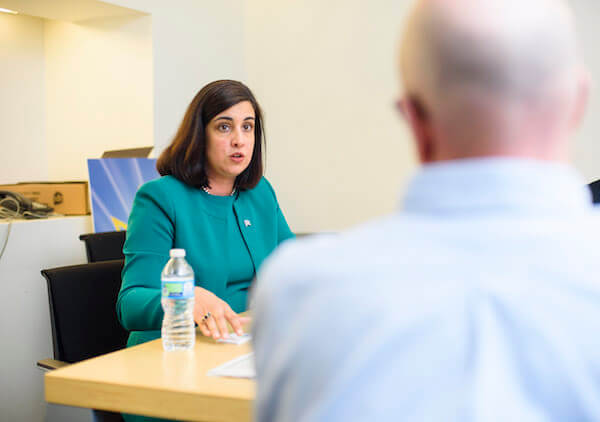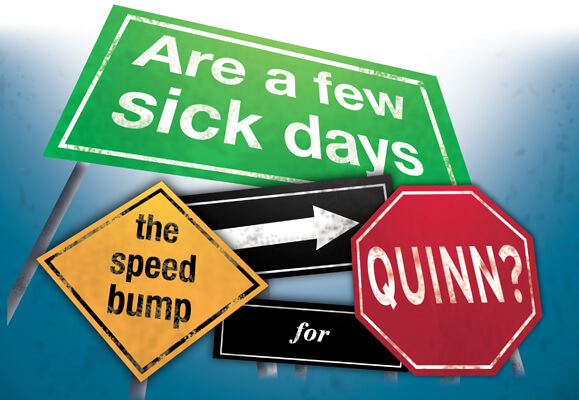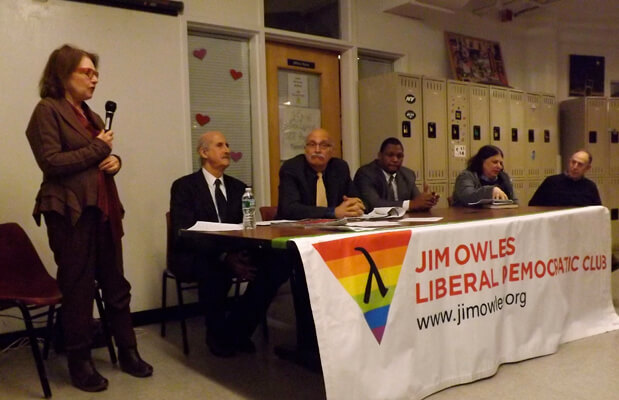Governor Andrew Cuomo won the hearts of the LGBT community when he marshaled the powers of his office to give New Yorkers marriage equality in the first six months of his term. Not incidentally, he won the affection and respect of many other voters.
The positive reaction from queers is hardly surprising, but it was a breakthrough that others were thrilled as well. The public at large knew gay marriage is a good thing, They were pleased New York had done the right thing.
But a leader who does one good deed doesn’t pass through the gates of Heaven. The accounts aren’t settled so quickly.
The Long View
Cuomo is now facing this reality. Next week’s primary election isn’t merely about his next term, it’s about his ambitions. There is general agreement he is the most qualified among this year’s gubernatorial candidates, but there is also widespread unhappiness with the job he has done and the way he does it. For many voters, the trick is to return him for another four years without rubberstamping his ambitions to serve three terms — a standard of success established by his father Mario more than two decades ago.
Perhaps more importantly, voters are mindful that if Hillary Clinton doesn’t jump into the 2016 presidential contest, Andrew’s eye would be on that race — fulfilling an ambition his father held back from.
These calculations explain the Zephyr Teachout boomlet, A vote for her in the primary is a way to tell the world, “Governor you have to do a better job or it will be your last term in office.” It is also a way to encourage politicians to make plans to succeed the governor four years from now and make it difficult for him to punish those who do so.
This is insider baseball, but the stakes are large. The governor needs to make a mid-term correction. He should adjust his policies. The New York Times editorial declining to endorse Cuomo laid out the larger case that implicitly — if not in so many words — argued for a protest vote in favor of Teachout.
The governor’s policies regarding law and order and their connection to youth are emblematic of the missed opportunities. New York’s criminal justice record remains replete with high rates of arrests and incarceration of the young for marijuana, subway fare beating, and other quality of life crimes. Prison represents their graduation into a life of diminished options. With records littered with quality of life convictions, these young people — predominately young man of color — are at high risk for tough sentences from district attorneys and courts.
New drug laws — which social science research overwhelmingly points in the direction of — would not only serve the interests of justice, they would also reduce the state’s prison population. Young people from poor neighborhoods often live in a criminalized environment. When they go to school they pass through metal detectors, when they lose their temper with a teacher they are arrested, when they go home police patrol the hallways of their buildings, when they lack the fare for public transportation, they are busted for turnstile jumping or for panhandling to get the money needed. If they are immigrants, they might be deported.
This is a generation headed to jail. The United States is the world leader in putting people away — but it wasn’t always this way. The historic norm was that for every 100,000 persons, 125 were locked up. After 1975, the nation went berserk and by 2006, the peak of this wave of imprisonment, the ratio had soared to 750 per 100,000 — or more than two million prisoners.
And these figures understate the crisis. Imprisonment rates are significantly higher in poor communities. Go into a suburban high school and ask students if they know anyone in prison and more often than not no one raises their hand. Go into a non-elite school in the Bronx or Brooklyn and almost every student will raise their hand. That many young men in prison are also fathers only adds to the damage. It is in these prison feeder neighborhoods that quality of life enforcement has its most damaging effects — and studies have clearly shown that LGBT youth of color as well as immigrant young people are among those targeted by the heavy-handed policing.
By fits and starts, the nation is retreating from this draconian enforcement model. It’s a sea change that should be embraced by Democrats, but many of them remain skittish that they could face accusations of being soft on crime. Too often, they believe tough policies are an unfortunate necessity. Drugs and intoxication cause crime. Arresting people stops this from happening.
Amidst this clash of perspectives, Andrew Cuomo is one resistant to embracing new strategies for controlling drug use without arrests. The modifications he forced on the state’s new medical marijuana law were intended to preserves the clear message that marijuana is illegal. That’s a message that bolsters the ongoing epidemic of marijuana arrests in New York City — the pot bust capital of the world. The crabbed bill he insisted on gratuitously makes the State Police superintendent a co-director of the program — to prevent “diversion” of medical marijuana into the general population.
The governor is proud to have devised a medical marijuana plan that doesn’t make stoners happy. His no-smoking-the-herb-bill is tightly tailored to treating specific symptoms for specific diseases. But the key medical benefit of marijuana is that it makes people feel better — people whose conditions are compounded by the stress of living with discomfort and pain. The Legislature proposed a bill that would allow doctors to gradually extend the permissible uses of marijuana to include a larger and larger population of patients who could benefit. The governor substituted his own narrower, more constricted law.
A medical marijuana law that put doctors in charge could encourage public health strategies for controlling marijuana use without police arrests. That is a worthy goal — it’s a simple proposition that the harm of acquiring a criminal record is more damaging than any harms that could come from marijuana use.
In his book “A Plague of Prisons,” Ernest Drucker lays out the scientific analysis of how our law enforcement system has gone dangerously awry. Medical marijuana offers one way to refocus our thinking on the drug use that is such a driver of our prison culture. Unfortunately, Cuomo has divorced the two issues and made it impossible to build on the progress of a new medical marijuana law.
This is the sort of limited vision that has stunted a gubernatorial tenure that started out so boldly and promisingly. That is my reason for a protest vote for Zephyr Teachout in the September 9 primary.




























